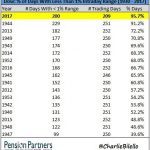The oil and petroleum markets took a Turkish bath yesterday, but in doing so it may have washed out the bearishness and put in our seasonal low. The moves in the market seemed beyond crazy because at the end of the day the Turkish currency crisis is much more political than a financial crisis. Oil moved on OPEC, lowering its demand forecast and fears of a rise in supply, but it was Turkey that cleansed the market.

The economy of Turkey is small, and the fears of contagion are being overblown as European Banks are in much better shape than they were during the last crisis. With Mario Draghi at the helm, we know he will do whatever it takes to provide stability if we indeed get to that point. Turkey is saddled with a leader that does not get it, and have tons of corporate debt that makes the Lira more vulnerable.
Jeff Sposs, at The Week, writes that “From 2005 to 2017, the debt load of Turkish corporations leaped from 20 percent to nearly 70 percent of the country’s GDP. That borrowing drove years of robust economic expansion, making Turkey the fastest growing member of the G20 in 2017. But over half of that borrowing was done in foreign currencies — mostly U.S. dollars — instead of lira. And much of that debt is held on the balance sheets of domestic Turkish banks, who were happy to facilitate the borrowing spree. This was all well and good until mounting trade tensions with America, combined with pre-existing nervousness about inflation, interest rates, and the rest, finally inspired international investors to all flee the lira at once.”
Yet, oil and products at first seemed worried that Turkey could blow up and hit demand. Those bearish fears were inflamed after we saw data from the private forecaster Genscape that reported supplies in Cushing Oklahoma increased by 1.747801 million barrels from Friday August 3rd. That was the biggest increase in recent memory and is a sign that the Canadian Syncrude outage is fixed and perhaps a bit of a pause in what has been record refining demand.













Leave A Comment